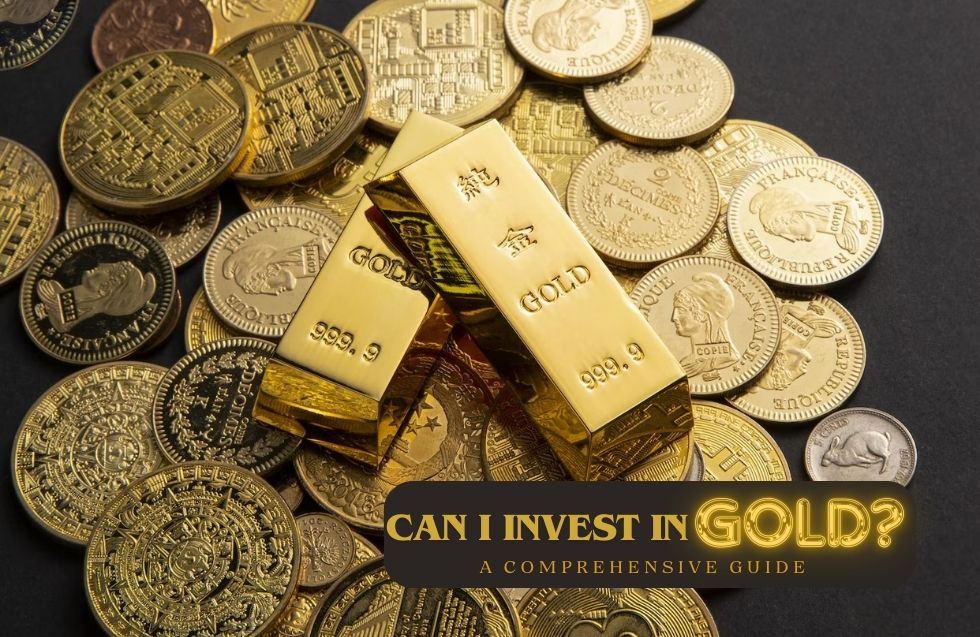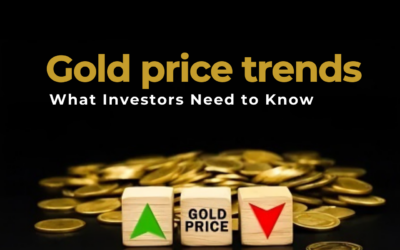Gold has long been regarded as a symbol of wealth and a safe haven in times of economic uncertainty. Its allure transcends cultures and generations, often seen as a stable store of value. But is investing in gold a smart move for you? In this blog, we’ll explore the different ways to invest in gold, the benefits and risks, and whether it can be a valuable addition to your investment portfolio.
Why Invest in Gold?
Gold is often seen as a hedge against inflation and economic instability. Unlike paper currency or other types of investments, gold tends to hold its value even when financial markets are volatile. Some key reasons people invest in gold include:
- Wealth Preservation:
Gold has maintained its value for thousands of years. While fiat currencies can be affected by inflation and government policies, gold is a tangible asset that historically has not lost its purchasing power. For example, in ancient times, a gold coin could buy a decent amount of goods or services, and today, the equivalent value of gold can still purchase similar goods. This is why many investors see gold as a safe way to preserve their wealth over the long term. - Portfolio Diversification:
A balanced portfolio typically includes various asset classes like stocks, bonds, and real estate. Gold often behaves differently from these assets, meaning its price may rise when stock markets are down. This characteristic makes gold an effective hedge against market volatility, reducing overall portfolio risk. For example, during the 2008 financial crisis, stock markets plummeted, but gold prices surged as investors turned to safer assets. - Safe Haven Asset:
During periods of geopolitical uncertainty or financial crises, investors tend to flock to gold as a safe-haven asset. In times of war, economic collapse, or banking failures, gold provides a store of value that is not tied to any particular government or currency. A prime example of this was during the COVID-19 pandemic when gold prices soared to record highs as global markets and economies were thrown into turmoil.
How Can You Invest in Gold?
1. Physical Gold
- Gold Bullion (Bars and Coins):
Purchasing physical gold in the form of bullion (bars or coins) gives you direct ownership of the asset. Gold coins, such as the American Gold Eagle or the Canadian Gold Maple Leaf, are widely recognized and easy to trade. However, storing physical gold safely can be a concern. You’ll need a secure vault or a safety deposit box, and insurance to protect against theft or damage.
Pros: Tangible asset, full ownership, no counterparty risk.
Cons: Requires storage and insurance, less liquid compared to other forms of gold investment. - Gold Jewelry:
Gold jewelry is more commonly purchased for personal use rather than as an investment. While it retains intrinsic value, jewelry often includes a markup for craftsmanship, which reduces its investment potential. In addition, some gold jewelry is mixed with other metals, which can affect its purity and resale value.
Pros: Aesthetic value, easily accessible.
Cons: High markups, mixed purity, not ideal for serious investors.
2. Gold ETFs (Exchange-Traded Funds)
- Gold ETFs:
ETFs are a popular way to invest in gold without owning physical gold. A gold ETF tracks the price of gold, and you can buy and sell shares of the ETF like a stock. One of the most well-known gold ETFs is the SPDR Gold Shares (GLD). ETFs are highly liquid, meaning you can quickly enter or exit your position. Additionally, ETFs are cost-effective, as you don’t need to worry about storage or insurance for physical gold.
Pros: Highly liquid, easy to trade, no need for physical storage.
Cons: Management fees, no direct ownership of gold.
3. Gold Mining Stocks
- Gold Mining Stocks:
Investing in companies that mine gold, such as Newmont Corporation or Barrick Gold, is another indirect way to gain exposure to the gold market. These stocks often move in correlation with gold prices, but they are also affected by the performance of the specific company and operational risks, such as labor strikes or mining accidents. The potential for higher returns exists, as successful mining companies may outperform the price of gold itself. However, the risks are also higher compared to physical gold.
Pros: Potential for higher returns, and dividends from some companies.
Cons: Exposed to company-specific risks, not always correlated with gold prices.
4. Gold Mutual Funds
- Gold Mutual Funds:
Mutual funds that focus on gold and precious metals invest in a diversified portfolio of gold mining companies or directly in gold. This provides diversification within the gold sector and allows you to invest in multiple gold-related assets without having to pick individual companies. Funds are managed by professionals, which can be an advantage for investors unfamiliar with the mining sector.
Pros: Professional management, diversification across gold assets.
Cons: Management fees, indirect exposure to gold prices.
5. Gold Futures and Options
- Gold Futures:
Futures contracts are agreements to buy or sell gold at a predetermined price at a specific date in the future. They are used by both traders speculating on price movements and companies hedging against future gold price fluctuations. Futures offer leverage, allowing you to control large amounts of gold with relatively little capital, but this also increases the risk of significant losses if the market moves against you.
Pros: High leverage, potential for significant gains.
Cons: High risk, requires market expertise, complex for beginner investors. - Gold Options:
Options give investors the right, but not the obligation, to buy or sell gold at a specific price before a certain date. Like futures, options are speculative and can lead to significant gains or losses. They’re often used by more advanced traders who are comfortable with derivatives.
Pros: Flexibility, limited risk (you can only lose the premium paid for the option).
Cons: High complexity, requires deep market knowledge.
Benefits of Investing in Gold
- Protection Against Inflation:
Gold prices typically rise when inflation increases. This makes it an attractive investment for preserving purchasing power during inflationary periods. For instance, during the 1970s inflationary period in the U.S., gold prices rose dramatically as the value of the dollar declined. - Global Demand:
Gold is used in jewelry, electronics, and even in industrial applications. This consistent global demand helps stabilize its price. Additionally, central banks around the world hold significant reserves of gold, providing another layer of demand and stability. - Liquidity:
Gold is highly liquid, meaning it can be easily converted to cash. Whether in physical form or through financial products like ETFs, gold can be sold quickly in most markets. This is an important feature, particularly for investors who need flexibility.
Risks of Investing in Gold
- Price Volatility:
Although gold is often considered stable, its price can fluctuate, especially in the short term. Economic factors, changes in interest rates, and currency movements can all affect gold prices. Investors who buy gold for quick gains might experience losses if the market doesn’t move in their favor. - No Yield or Dividends:
Unlike stocks or bonds, gold doesn’t generate income in the form of dividends or interest. Your returns depend entirely on the appreciation of the asset. This makes gold less attractive to income-focused investors. - Storage and Insurance Costs:
For those investing in physical gold, storage can be a challenge. You’ll need a secure location, such as a safety deposit box or a professional storage facility. Additionally, insurance is required to protect against theft or damage, adding to the overall cost of your investment.
Is Gold a Good Investment for You?
Investing in gold can be a smart move depending on your individual financial goals and market conditions. Gold is typically recommended as a portion of a diversified portfolio, ranging from 5% to 10% of your overall investments. If you’re looking for a long-term store of value and a hedge against inflation, gold can be a valuable addition. However, it’s crucial not to rely solely on gold, as other investments like stocks, bonds, and real estate may provide better returns or cash flow.
Final Thoughts
Gold investment comes with its own set of advantages and risks. It serves as a safe-haven asset, protecting against inflation and market volatility, while offering high liquidity. Whether through physical gold, ETFs, mining stocks, or futures, you have various options for incorporating gold into your investment strategy. Always assess your risk tolerance, time horizon, and portfolio goals before deciding how much gold to allocate. Consult with a financial advisor if necessary, and remember to diversify your investments to balance potential risks.
Gold is timeless—but how you invest in it is entirely up to you!












